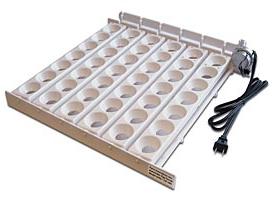Yep, that's what everyone needs, some garlic flavored honey. Very strong garlic honey. So strong when you open the jar the smell knocks you down. You think I'm kidding, right? I'm not.
Many years ago, I don't remember when, Frank and I came across some information about the benefits of infusing, for lack of a better word, honey with garlic for medicinal purposes. The benefits of honey and garlic go back as far as man has been keeping records, so there is no surprise there. But as a review, I will include some of the many advantages of including these two items in your diet.
According to Herbal Antibiotics some of the medicinal uses and properties of honey include:
- can be applied directly to a wound
- used internally for immune stimulation
- treatment of colds, flu and respiratory infections
- expectorant
- anti-inflammatory
- anticarcinogenic
- promotes healing of peptic ulcers and bacterial gastroenteritis
- good for gingivitis
- NEVER give honey to babies under one year old due to the chance of botulism
The Illustrated Encyclopedia of Healing Remedies outlines some of the medicinal properties of garlic which include:
When we first started using our garlic honey mixture we mainly used it as a cough/cold medicine. Now the more I read about it, the more I realize how beneficial it would be to consume it everyday. Since I have been having some sinus problems lately I have been taking it everyday, several times a day, which means it is time to fix up another batch.
 |
| The jar on the right is the one we are currently using. |
 |
| Our daily kefir and my new sourdough starter are sitting in the background. |
It is a very simple process. Take one whole head of garlic, and use all of the cloves. This is some of the garlic we grew last summer. Since they are pretty small heads, I am using several of them instead of just one large head. Peel the cloves.
Fill a quart jar about 3/4 full of honey. We prefer to use local honey, but this time I am using up some store bought honey we stocked up on right after we moved here. We have since been able to locate a source of local honey, but we need to use this up as well.
Put the cloves in the honey.
Stir it up to coat the cloves.
Set it back out of the way. Stir it up every few days for a couple of weeks. When you open the jar and the garlic-y smell is so strong it just about knocks you down, it's ready. I usually leave the garlic cloves in the honey until they are kind of mummified looking or until they are just in the way too much. We don't eat them, I just throw them away. I have debated about cooking something with them, but I never have. They get pretty wrinkled up and look rather dead.
To use this wonderful concoction, just get a spoonful and eat it. The first few times you do this you might gag a little. It depends on how sensitive you are. We have been eating it for so long that we don't really notice it much. Not that it tastes that great, it's just worth it. Now, I would recommend you be strategic in the timing of taking this elixir. If you are going to have company over, you might want to wait until they are gone, unless, of course, you want them to leave quickly. Just be aware of how fragrant you may become after partaking of a dose.
This is just another one of those things that we can do for ourselves instead of relying on others to provide us with something that may have numerous side effects that we may, or may not even know about. We feel the more we can eliminate medications, over the counter or prescription, the better our health will be. This is not always possible, but we can try to the best of our ability. Some day soon, we may not have a choice in the matter.
Until next time - Fern
Garlic
strengthens the immune system as well as helps to fight chest
infections, coughs and congestion. I - See more at:
http://www.naturalblaze.com/2013/04/10-amazing-health-benefits-of-garlic.html#sthash.ly8rF1zy.dpuf









.JPG)









































